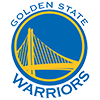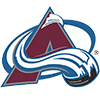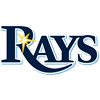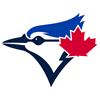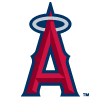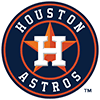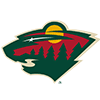Last week I began a new series of articles regarding pitchers and players under the age of 25 whom I would value for my fantasy baseball teams.
Today, I profile six such pitchers from the National League:
Hunter Greene, RHP, Cincinnati Reds (Age 22)
The Cincinnati Reds drafted Greene as the second player selected overall in the 2017 First Year Player Draft. He was drafted out of Notre Dame High School in Sherman Oaks, California and received a whopping $7.23 signing bonus.
It is important to note that Greene had Tommy John surgery in April 2019 and didn't return to action until 2021. He spent that season at the Reds training site. He has an electric fastball, even after having surgery. He flashed the high velocity in high school, which was a reason he was taken highly in the draft. He brings the heat at 99 miles per hour but has no problem hitting 100.
In addition to the fastball, Greene throws a slider, a cutter and a change-up. His change-up is his second most often used pitch, at 25 percent. But it is his fastball that will take Greene where he is bound to be headed -- the top of the Reds rotation.
When I saw Greene in spring training, he lit up the radar gun and threw fastballs almost exclusively. But imagine seeing the 100-mile per hour heater and then trying to hit the secondary pitches? It isn't easy.
Greene still needs work on those secondary pitches, and
Last week I began a new series of articles regarding pitchers and players under the age of 25 whom I would value for my fantasy baseball teams.
Today, I profile six such pitchers from the National League:
Hunter Greene, RHP, Cincinnati Reds (Age 22)
The Cincinnati Reds drafted Greene as the second player selected overall in the 2017 First Year Player Draft. He was drafted out of Notre Dame High School in Sherman Oaks, California and received a whopping $7.23 signing bonus.
It is important to note that Greene had Tommy John surgery in April 2019 and didn't return to action until 2021. He spent that season at the Reds training site. He has an electric fastball, even after having surgery. He flashed the high velocity in high school, which was a reason he was taken highly in the draft. He brings the heat at 99 miles per hour but has no problem hitting 100.
In addition to the fastball, Greene throws a slider, a cutter and a change-up. His change-up is his second most often used pitch, at 25 percent. But it is his fastball that will take Greene where he is bound to be headed -- the top of the Reds rotation.
When I saw Greene in spring training, he lit up the radar gun and threw fastballs almost exclusively. But imagine seeing the 100-mile per hour heater and then trying to hit the secondary pitches? It isn't easy.
Greene still needs work on those secondary pitches, and he has to refine his command and control. He is walking four hitters per nine and striking out 10.5. He's a big guy, at 6-5, 230 pounds. He knows how to pitch downhill very well.
For now, Greene is using strictly a rising, four-seam fastball. It will be interesting to see if the coaching staff works on a two-seam sinking fastball with him. That would induce more ground balls and would add more depth to his repertoire. However, I've read that he is working on his cutter, but that is still a work in progress, and it may place too much stress on his elbow. Scouting Grade: 60
Trevor Rogers, LHP, Miami Marlins (Age 24)
The Miami Marlins drafted Rogers out of Carlsbad High School in New Mexico with the No. 13 pick in the first round of the 2017 draft. He signed for $3.4M, which was under the suggested MLB slot. Rogers slots as the third starter for Miami in a terrific rotation that includes Sandy Alcantara (26), Pablo Lopez (26), Elieser Hernandez (27) and Jesus Luzardo (24). Rogers and Luzardo are the lefties in the mix.
This season, Rogers' velocity is down from 96 in 2020 to 94. He also throws a change-up and a slider. His preference is to use the fastball/change-up combination most frequently. He throws a four-seamer, and hasn't included a two-seam sinker in his repertoire. Rogers has a very, very smooth delivery. His normal solid command and control have been tested this year, which often haunts young lefties. For his age, he's advanced in his mechanics.
Tall and lean at 6-5, 217 pounds, Rogers uses his long limbs well. He can bring that arm close to the hitter in his finish. His fantasy value is hampered by an offense that won't consistently offer him run support. Still, he's valuable on fantasy teams. This year, he is off to a difficult start. His ERA has escalated, as has his walk rate, which he has to continue to work on to reduce it below five per game. Not missing many bats, Rogers is striking out about seven hitters per nine. Scouting Grade: 50
Aaron Ashby, LHP, Milwaukee Brewers (Age 23)
Six-two, 181-pound Ashby is now the third starter in a Brewers rotation that features five very good starting pitchers. He is joined by Corbin Burnes (27), Brandon Woodruff (29), Freddy Peralta (25), Adrian Houser (29) and Eric Lauer (26). Ashby and Lauer are the two lefties.
Bringing Ashby to the rotation allows manager Craig Counsell the ability to keep his starters fresher over the course of a long, 162-game season. Ashby was a Brewers fourth-round pick in the 2018 draft out of Crowder College in Neosho, Missouri. He received a signing bonus of $520,000. The recommended value for that slot was $438,300.
Ashby uses a sinking, two-seam fastball as his primary offering. He also throws a four-seamer, but only about 6 percent of the time. He also has a slider, curve and a very reliable change-up. His fastballs both sit at an identical 95 miles per hour. His slider is the pitch that intrigues me the most. He misses plenty of bats, and with that vast repertoire, he keeps hitters off-balance. It becomes very tough for the hitter to guess which pitch is coming next.
Again, like many lefties, Ashby needs work on both his command and his control. Walks have been an issue for him, and until he learns to repeat his delivery and throw strike one, he won't travel deeply in games. His pitch counts mount early. As a rotation starter, he'll have to show his manager that he can be relied upon to throw strikes. He is currently walking almost seven hitters per nine and striking out 10.
As he progresses and gets more repetition against quality major league hitters, Ashby profiles to be a very tough customer on the mound. The repertoire is that good. Scouting Grade: 55
Logan Webb, RHP, San Francisco Giants (Age 25)
The first spring I saw Webb I was fascinated by his mound presence and his repertoire. He had amazing command for a very young pitcher. Now, fast-forward, and Webb is the ace of the Giants staff. He was a fourth-round draft pick of the Giants in 2014 out of Rocklin High School in California. It looks like the Giants got a steal with Webb, as he signed for $600,000. It was above the $440,600 value for that slot.
Webb came into his own during the 2021 season, pitching to a record of 11-3 on a surprisingly good Giants team. He is off to another good start this year. Webb isn't particularly overpowering. He throws his four-seamer at 93, his sinker at 91, and he also has a devastating slider and change-up. So far this year, he is using his sinker and change-up around 35 percent of the time and then his slider at 27 percent. The four-seamer is rarely used.
Webb is 6-1, 220 pounds, which is an ideal build for a baseball player. His key so far is inducing weak, end-of-the-bat contact. Hitters just aren't barreling his pitches with any great frequency. He gets ahead with the sinker and then brings that change-up or slider to change the eye level and destroy the balance of the hitter in the box. He's a true craftsman, and his pitches are tough to pick up out of his hand. Webb isn't a high strikeout pitcher. He needs good defense behind him, as hitters do make contact. But he's a winner, and he's getting stronger and better. Scouting Grade: 60
MacKenzie Gore, LHP, San Diego Padres (Age 23)
Gore has been written and talked about so much (including by me) it is hard to believe he's still only 23. He was a first-round draft pick out of Whiteville High School in North Carolina. He received a signing bonus of $6.7M as the No. 3 player taken in the draft. He's 6-2, 197 pounds.
When I recently saw Gore pitch in the Arizona Fall League, he had tremendous difficulty repeating his delivery. He was rushing his pitches and was out of sync. That has changed. He's a good athlete, and his confidence in his abilities has returned. He appears to look more like the top-shelf pitcher he was projected to be when he was drafted.
Gore's fastball sits at 95, and he also throws a slider, a curve and a change-up. Instead of trying to nibble and hit the corners, he is relying on his fastball for 66 percent of his pitches. He gets tremendous life on the pitch, as the late movement fools hitters. So far this year, cleaning up his mechanics and his delivery have worked for him. He's still walking too many hitters, but his pitch movement has been strong enough to carry weak contact. Scouting Grade: 65
Jesus Luzardo, LHP, Miami Marlins (Age 24)
Luzardo was selected by the Washington Nationals in the third round of the 2020 draft out of Stoneman-Douglas High School in Parkland, Florida. As the No. 94 player taken in the draft, Luzardo was signed by the Nationals for an above slot $1.4M signing bonus.
The Nationals traded Luzardo, infielder Sheldon Neuse and pitcher Blake Treinen to the Oakland Athletics in July 2017, in exchange for pitchers Sean Doolittle and Ryan Madson. Then, in July 2021, Oakland traded Luzardo to the Miami Marlins for outfielder Starling Marte.
Luzardo doesn't have a huge frame for a pitcher in today's game. At 6-0, 218 pounds, he has a bigger arm than one might think by looking at him on the mound. He throws both two- and four-seam fastballs at an average of 97 miles per hour. Considering that he has had injury problems with his rotator cuff in the past, his velocity is outstanding. He also throws a slider and change-up in a limited repertoire. He has scrapped his curve ball, which was used only sparingly in the past. His fastball (38 percent use)/slider (44 percent use) combination make up his general pitching plan.
Luzardo is a good athlete with poise and mound presence. He is a craftsman on the mound, limiting hard contact with great movement on his four-seamer, sinker and slider. He is having a terrific start to his season, and he has flirted with striking out 13 to 14 hitters per nine innings pitched. He has reduced his walk rate to just over four per game, from previous years of five walks per nine.
Miami is careful with his arm, as they are with their stable of fantastic pitchers. As a consequence, he may not go as deeply in games as fantasy managers may hope. At least not to start the season so far. Scouting Grade: 65
HEADING HOME:
The Marlins starting pitching stable is deep and very well qualified. The names that jump out at include:
Sandy Alcantara, RHP, age 26
Pablo Lopez, RHP, age 26
Trevor Rogers, LHP, age 25 (see above)
Elieser Hernandez, RHP, age 27
Jesus Luzardo, LHP, age 24
----------
Sixto Sanchez, RHP, age 23 (currently injured)
Edward Cabrera, RHP, age 24
Max Meyer, RHP, age 23
Eury Perez, RHP, age 19
Jake Eder, LHP, age 23
Dax Fulton, LHP, age 20
Each pitcher below the line could find his way to the big league roster. However, for the pitching staff to ultimately reach each individual's upside, the team has to improve on offense. Their best opportunity will be to trade for offense from among that group of very high-profile pitching prospects.
I believe any of those 11 pitchers listed to be fantasy worthy. Just check the health status before diving in to the Marlins pitching pool.
Anyone thinking Mike Trout isn't Mike Trout should look again. He's especially tough because Shohei Ohtani hits in front of him in the Angels lineup. That gives Trout some good pitches to hit when Ohtani is on base.
And please don't sleep on the Angels. Taylor Ward has power and speed at the top of the order. The Angels can hang around all season provided Ohtani, Noah Syndergaard and Patrick Sandoval deliver what I think they can on the mound. Young Reid Detmers has struggled out of the gate, but he can pitch.
Watch out for Houston if Yordan Alvarez heats up…which I think is happening. The offense is just too good in Houston to falter. They need to pitch up to their ability. However, I'm concerned about Jose Urquidy. Like the Angels, the team is now going with a six-man rotation of Justin Verlander, Urquidy, Luis Garcia, Framber Valdez, Jake Odorizzi and now, Cristian Javier. That cuts into your fantasy innings and start opportunities.
Lance McCullers Jr. is returning soon from the Astros injury list. He had a strained flexor tendon, but he may be worth rostering if he is available in your league. Just stash him on the IL for now.
I saw the Dodgers lose to the Diamondbacks because their bats went cold. I don't expect that to continue all season, but the big boppers certainly aren't bopping. They need to find their offense to match the brilliant pitching they are getting from Clayton Kershaw, Walker Buehler and Julio Urias in particular. And don't look now, but Dustin May will likely be back late in the season.
The war between the Mets and Cardinals is getting ugly. But hearing and reading about Mets starter Chris Bassitt complain about how bad the baseball is and that MLB doesn't care about the inconsistency of the baseballs had to make me laugh. But he has a point. MLB is very cavalier about the baseballs. And they own the company where the MLB baseballs are made.
MLB makes the baseball. MLB has used all the leftover baseballs they've had lying around in parks for the last three years. Of course, to my way of thinking, you are seeing three different iterations of baseballs being used. Some from 2020, some from 2021 and some from 2022. They will be different. MLB was not about to throw out or otherwise not use those white "pearls" sitting around in storage.
MLB teams may now use 14 pitchers until the end of the month. Rosters are down to 26, but they can roster no more than 14 pitchers from among that total.
Thank you for following me on twitter @BerniePleskoff. Thank you for reading my articles at Forbes. I always respond to your comments. So have at it, if you so desire. Have a good week.








